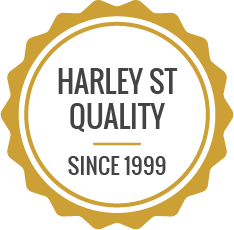Cautery
Resurface scarred skin

- Boosts confidence
- Restores even texture of skin
- Stimulates collagen

Cautery refers to the use of an electrical current and elevated heat through a small metal tip, in order to treat a targeted area of skin. It can also be used to refer to chemical cautery treatments usually used in face/skin peels. It is an innovative sector of dermatology that can help address a variety of concerns.
Cautery treatment is suitable for removing skin tissue that is softer than the skin surrounding it. However, there are different treatment types depending on the issue at hand.
These types of treatments either use heat or electro-cautery to destroy unwanted tissue and stimulate collagen production. One of the biggest benefits of cautery treatment is that it can be done on most skin types but your suitability will be discussed in a consultation at our London clinic.
Acne scarring treatments stimulate the production of collagen to naturally promote healing and regeneration. Chemical peels remove the top layer of skin to stimulate the growth of healthy new skin cells, while micro-needling delivers tiny pinpricks to the surface of the skin, promoting collagen production. Laser therapy uses laser heat to penetrate the skin to achieve the same effect to resurface the skin’s texture.
The type of treatment you will require will depend on the nature and extent of your acne scars, so you will have an in-depth consultation prior to treatment and your aesthetician will advise you on the most suitable procedure to achieve the best results for your skin. Each treatment may vary from one person to another.
Cautery treatments can be used to address acne scars, alopecia areata, freckles, hemostasis, milia, mucous cysts, molluscum contagiosum, necrotised tissue, skin tags, stable vitiligo, warts and xanthelasma palpebrarum.
However, if you have a very large lesion, an active infection, uncontrolled diabetes or keloidal tendencies, you need to consult a medical professional before pressing forward.
Following cautery treatment, you may feel a slight burning sensation on the surface of the skin and experience a scab for 1-2 weeks post-treatment. This is perfectly normal. You can alleviate your discomfort with an ice pack but the scab should be left to naturally fall off to avoid further skin trauma. Other side effects may include swelling and redness but these will also subside.
You should regularly wash the treatment area with water, mild soap and any ointment/cream supplied by the practitioner for at least a week post-treatment. It is also very important to wear SPF 60 sunscreen post-treatment.


The treatment varies depending on your skin and acne scarring.
As mentioned, cautery treatment can mean a variety of different procedures so this question is better answered after you have been assessed by our specialist doctor.
Because cautery treatment encompasses a range of procedures, you can usually expect the target area to be scabbed for anywhere between 1-2 weeks post-treatment.

Ⓒ Bodyvie Limited 1999 - 2025 All rights reserved. All trademarks acknowledged.
Company number 3849113